The ROG Swift PG35VQ elevates every game with an ultrawide HDR canvas
If you're a display obsessive like I am, you're already aware that the quest for the perfect monitor never truly ends. Picking even the highest-end gaming screen involves some degree of compromise. You might have to give up on your preferred maximum refresh rate, color gamut, peak brightness, panel type, or more to get a monitor that ticks the widest subset of boxes possible. And since modern displays can last for a decade or longer, you may find yourself wistfully watching as a parade of new tech makes any past compromises sting all the more.
The past few years have made me especially wistful at times. Thanks to the growing need for monitors that can reproduce wider color gamuts and higher dynamic ranges than ever, there's quite a bit of innovation happening for display and backlight technologies. Today's displays can do many more tricks than the average 1920x1080, 60Hz standard-dynamic-range (SDR) screens of yore. The ROG Swift PG35VQ embodies the cutting edge of display technology, and it ticks a wider range of boxes on my "perfect display" list than any before it. I went hands-on with the PG35VQ to see just what it can do.
Ready for anything
High refresh rates? Check. This display can go as high as 180Hz out of the box, and an option in the on-screen display (OSD) unlocks a 200Hz setting for those with the greatest need for speed and responsiveness. Variable refresh rate? You bet. Since it's an NVIDIA G-SYNC Ultimate display, the PG35VQ can link up with GeForce graphics cards to deliver tear-free gaming even in titles that can't always keep up with its dizzying refresh rates.
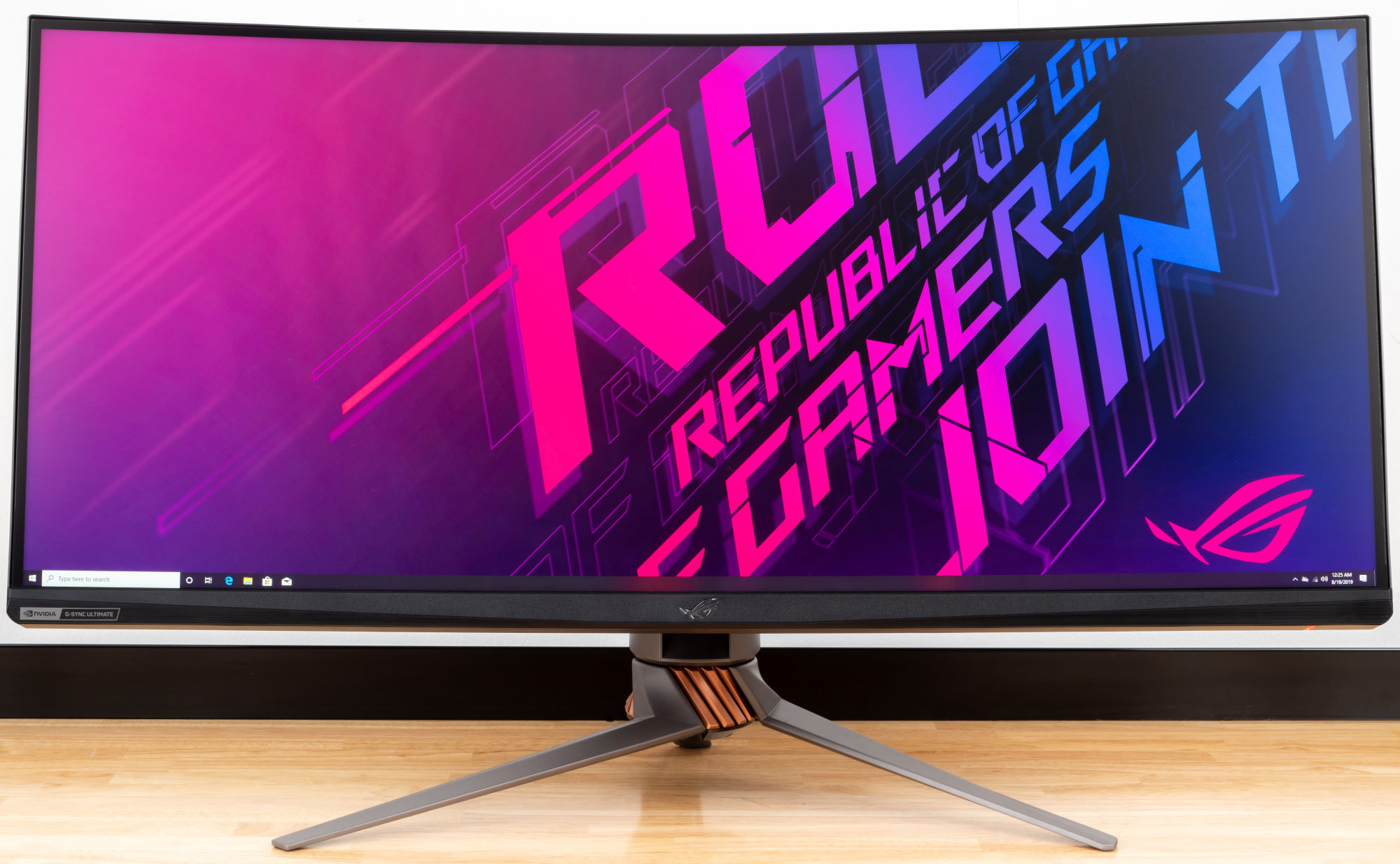
Wide color gamut? Check. The PG35VQ's backlight uses a quantum-dot enhancement film to achieve 90% coverage of the DCI-P3 gamut. High dynamic range? Check. We use a 512-zone full-array local dimming backlight to allow darker areas of a scene to fade to inky blackness, while point light sources can blaze with as much as 1000 nits of brightness or more. Thanks in part to that technology, the PG35VQ meets VESA's most stringent HDR certification so far: DisplayHDR 1000.
Even better, all that technology isn't limited to making HDR content look great. OSD options let you enable wide color gamut support and the full-array local dimming backlight independently of the HDR mode, and those options both work to make SDR games more colorful and contrasty than they ever could be on a typical SDR display. Set up the PG35VQ appropriately, and it'll make every game look better.
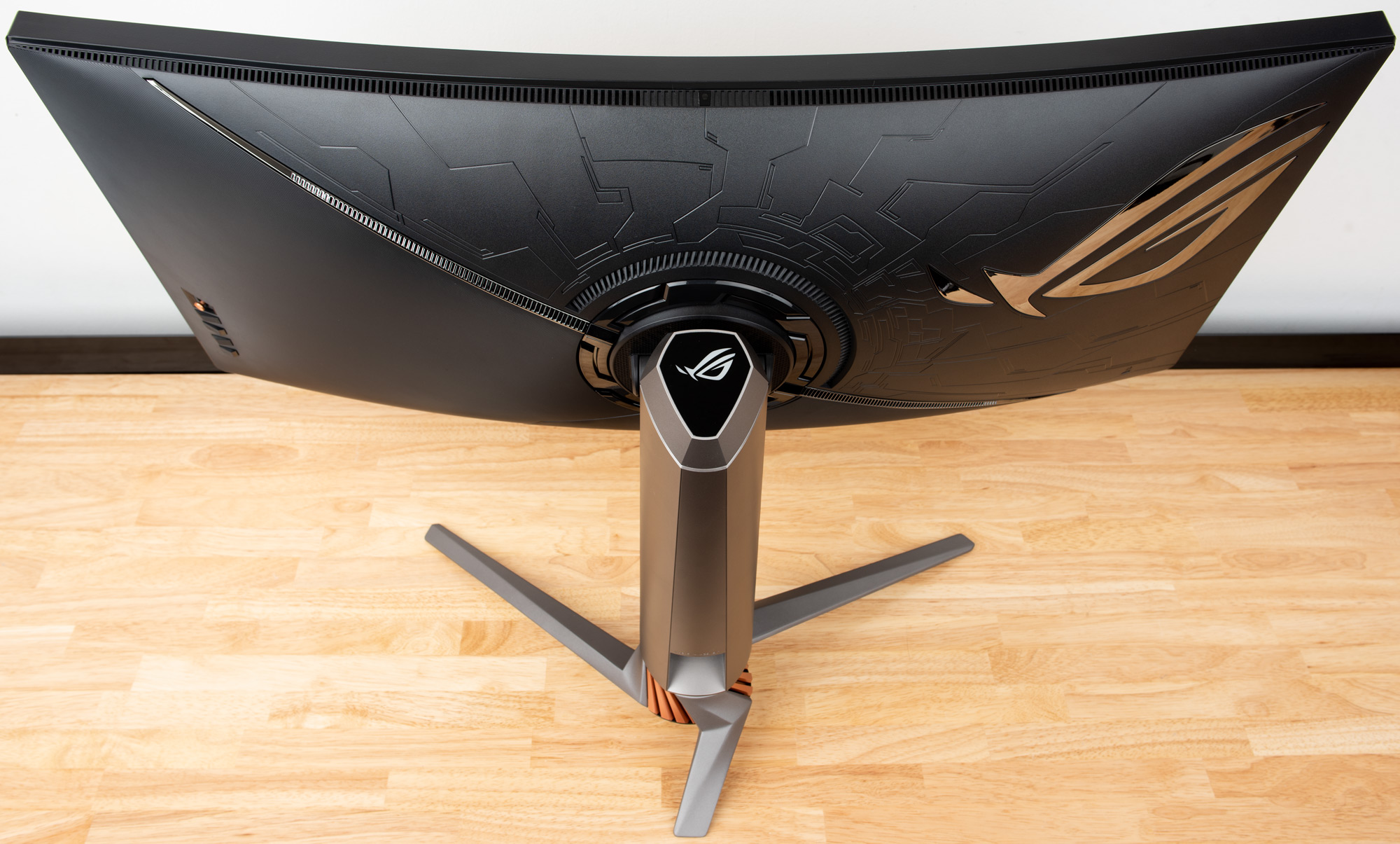
Before I went hands-on with the PG35VQ, I'd never gamed on a curved ultrawide display outside of a few fleeting opportunities at trade shows. Admittedly, I had some reservations about the curve and any potential geometric distortion it might cause in the usually flat world of traditional desktop apps. In practice, though, the extra width and curved geometry only required a couple of days' worth of adjustment.
Once I fired up a game or two, I was immediately sold on the 3440x1440 resolution and its resulting 21:9 aspect ratio. If you're familiar with complaints about field of view with VR headsets, spending a few minutes gaming on the PG35VQ will make you ask yourself why we don't make similar complaints about our gaming displays more often. Combine the PG35VQ's expansive vista with HDR and wide-color-gamut content, and the feeling of realism this setup provides is almost intoxicating. More on that experience in just a bit. We're not quite gaming in Cinerama here, but at 2.33:1, the view the PG35VQ offers is closer to that fabled cinematic experience than you might expect.
Cool under pressure
One challenge in making such a bright HDR monitor comes down to good old physics. If a display is going to push out nearly 1000 nits of brightness across its entire area, the hundreds of individual LEDs inside are going to have to consume a fair amount of power and throw off a fair amount of heat. We conquer this thermal challenge with active cooling and plenty of vents at the bottom and top edges of the display.
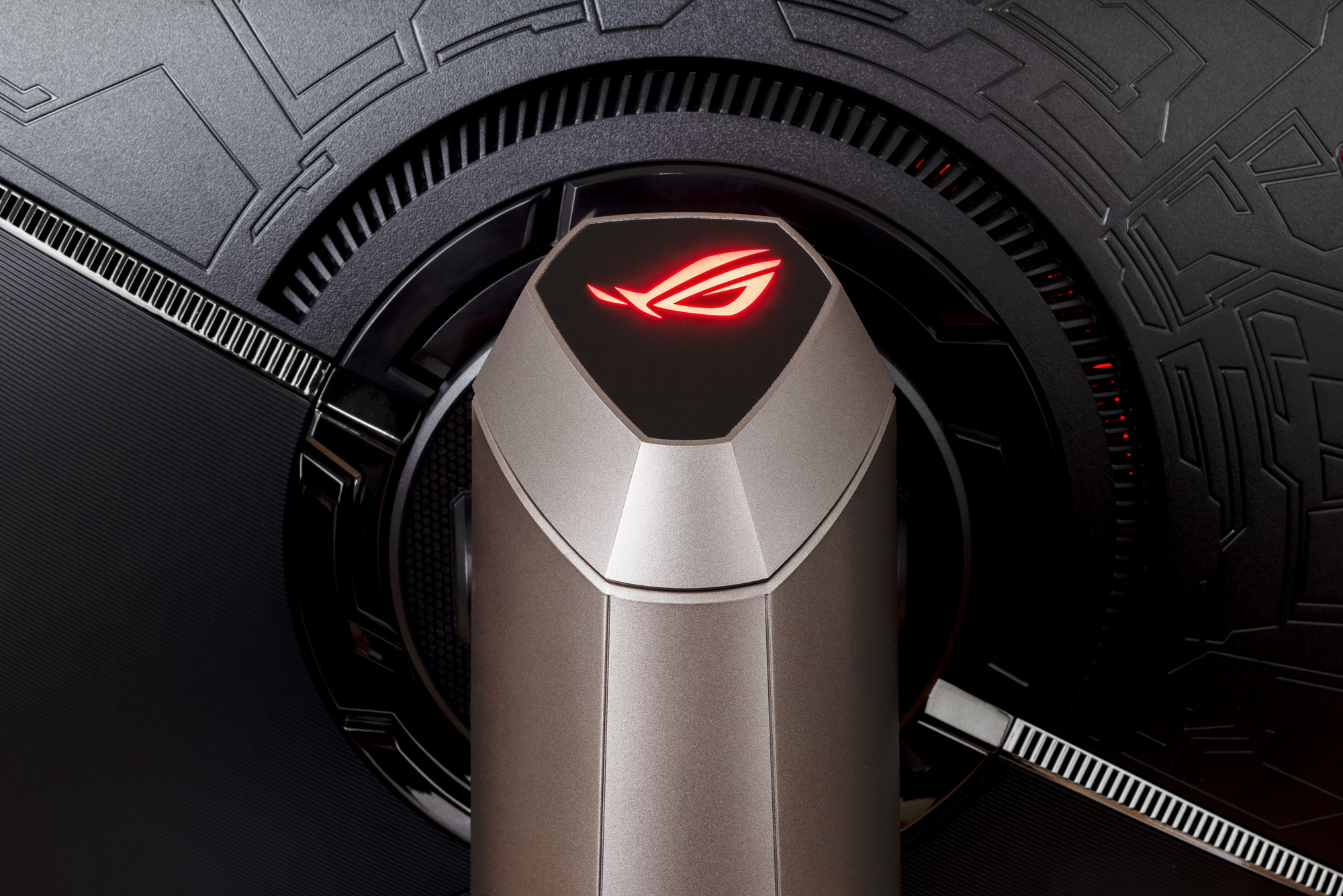
As an obsessive hardware tester, I know that smaller fans tend to come with unpleasant noise signatures, so I made sure to keep my ears perked for any whine from the ROG Swift PG35VQ. I'm pleased to report that the active fan inside the PG35VQ remained inaudible even as I torture-tested it with the brightest in-game scenes I could find. Thanks to smart thermal monitoring tech derived from other ROG products, the fan inside this display will only spin as fast as it has to in order to keep the LEDs inside at an optimal temperature.
Even the sound of the fans on my graphics card is more noticeable than any sound the PG35VQ emits while showing HDR content, so even if you were to play a game with its audio muted, it's unlikely you would ever be able to hear the display itself. In real life, where PCs emit noise and gamers play with speakers or headphones turned up, you (or others in the room) simply won't hear the PG35VQ.
Music to your ears
As our engineers were killing undesirable noise from the PG35VQ, they also made an entirely different and entirely desirable kind of sound possible from this display. If your motherboard doesn't already have a premium audio suite on board, you can kill two birds with one stone by plugging your headphones or speakers into the PG35VQ's own 3.5-mm jack. We drive this output with ESS' Sabre 9118 DAC, a premium chip that you'll only find in today's highest-end motherboards and portable audio players.
Piping music through the Sabre 9118 is a real treat for the ears. "Water Pots" from Luis Conte's 2011 album "En Casa de Luis" takes on an incredibly expansive soundstage, and the Sabre 9118 reproduces every instrument in Conte's vast arsenal of percussion with unflappable precision. Listening to the sand shakers on "Flamingo Zone" from Conte's "Marimbula," you can almost imagine individual grains rubbing against one another. The full-throttle electronic beats of Laszlo's "Interstellar" thump and sparkle through this display's DAC, too.
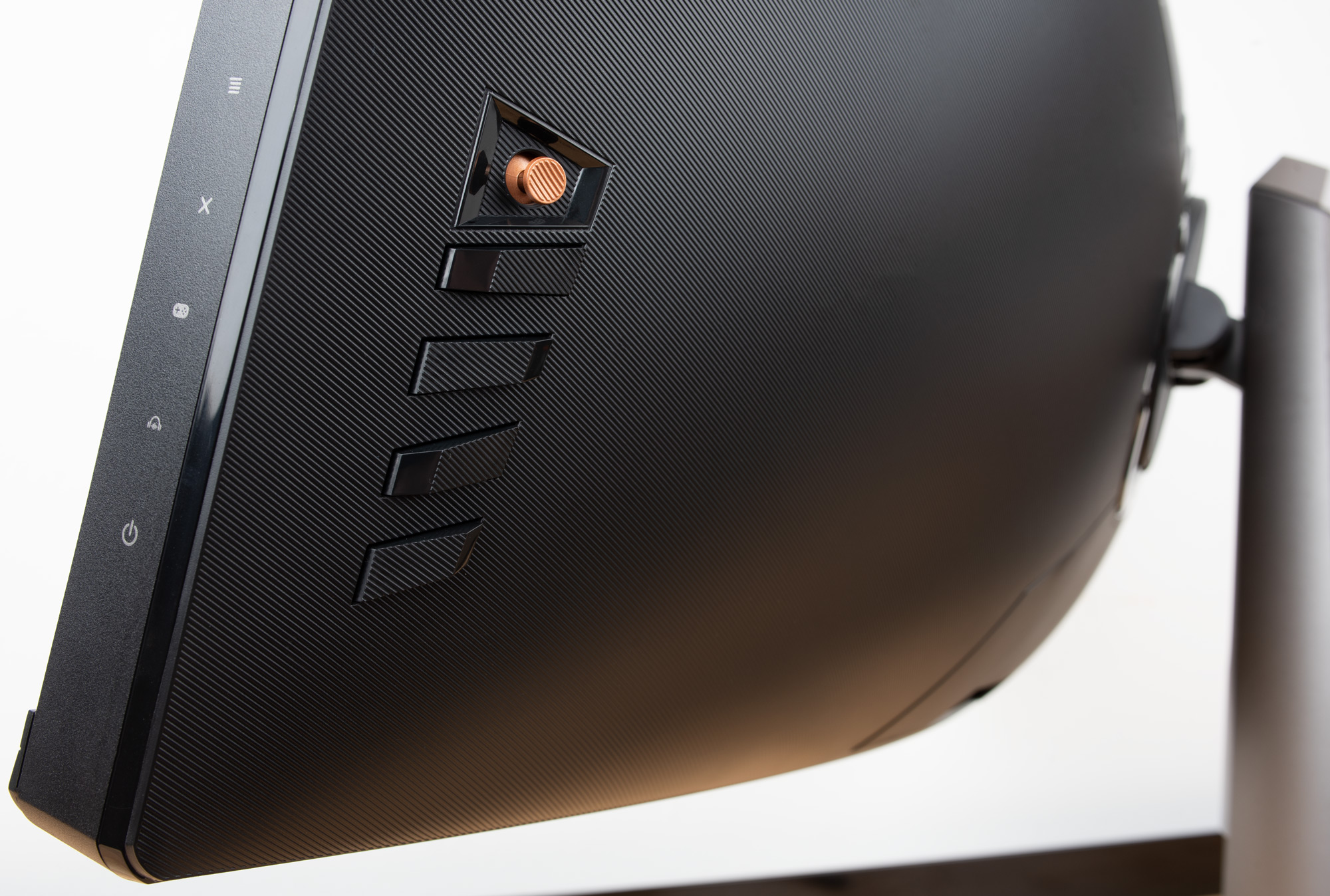
From the deepest lows to the highest highs my headphones could produce, the Sabre had no trouble keeping up. If you really want to take your music up a notch, plugging the included USB cable into the PG35VQ lets the Sabre 9118 operate in a 24-bit/192-KHz hi-res mode for the pickiest ears. A dedicated button on the right edge of the monitor lets you select the audio mode you'd like to use.
While my time with the Sabre was mostly spent listening to music, it unquestionably sounds great for games, too. The precise imaging from this chip's stereo field helped my ears pick out the location of even the sneakiest enemies in Counter-Strike: Global Offensive. If you rely on your ears as much as your eyes for gaming greatness, the Sabre DAC is a welcome companion in the PG35VQ.
Sitting pretty
The PG35VQ sits on the latest version of the twisted, asymmetric stand that's become an ROG trademark. We've integrated Aura RGB LED lighting into two zones on this monitor: a giant ROG logo on the back and a logo projector on the base. A third ROG logo glows in red to cap off the pillar of the monitor stand itself.
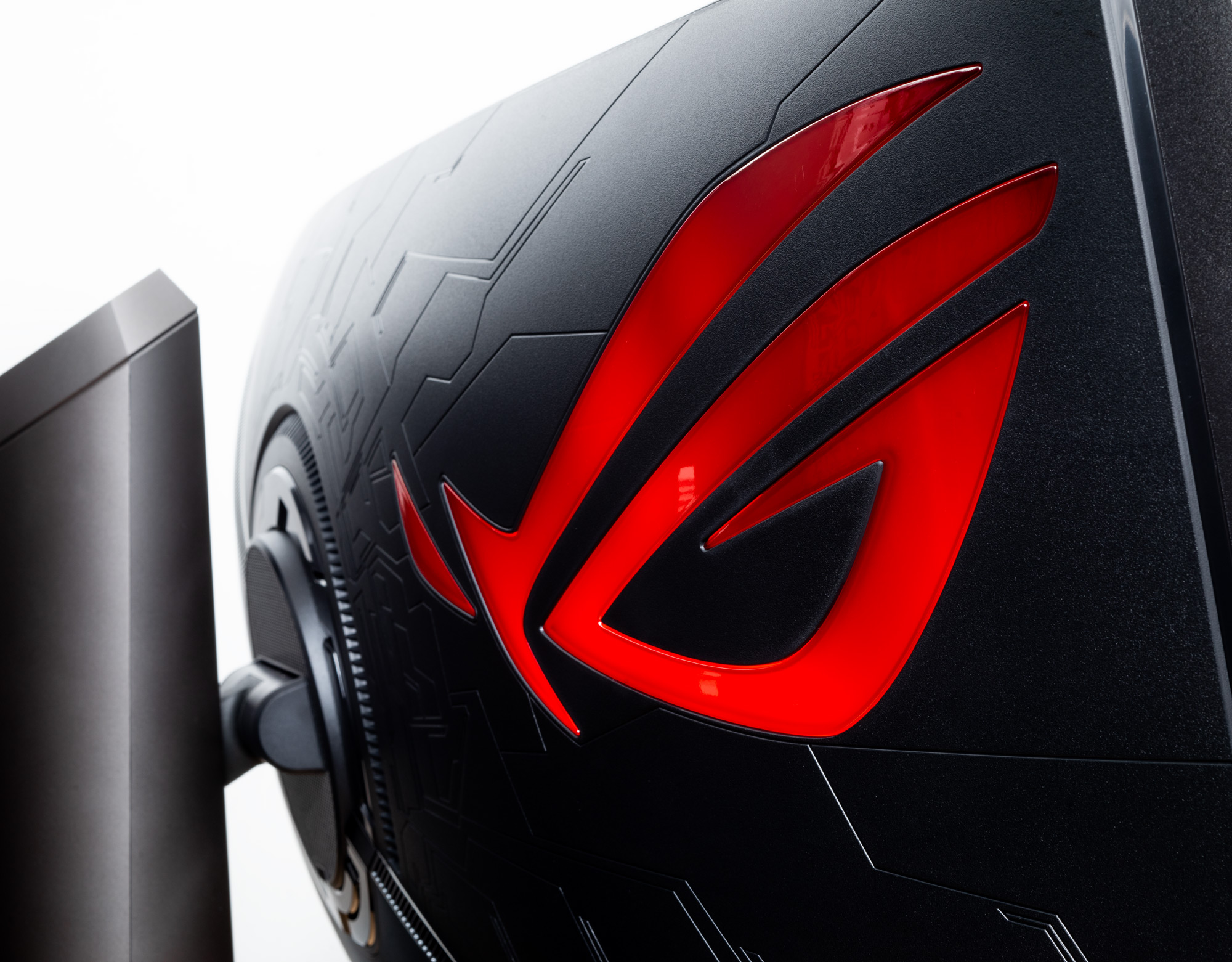
Thanks to Aura Sync compatibility, it's easy to add the PG35VQ's RGB LED distinctiveness to the rest of your Aura collective. Just plug in the included USB cable and fire up the Aura utility. Should you want to shut down the RGB LED party entirely, it's easy to put the PG35VQ in stealth mode with a few clicks in the OSD.
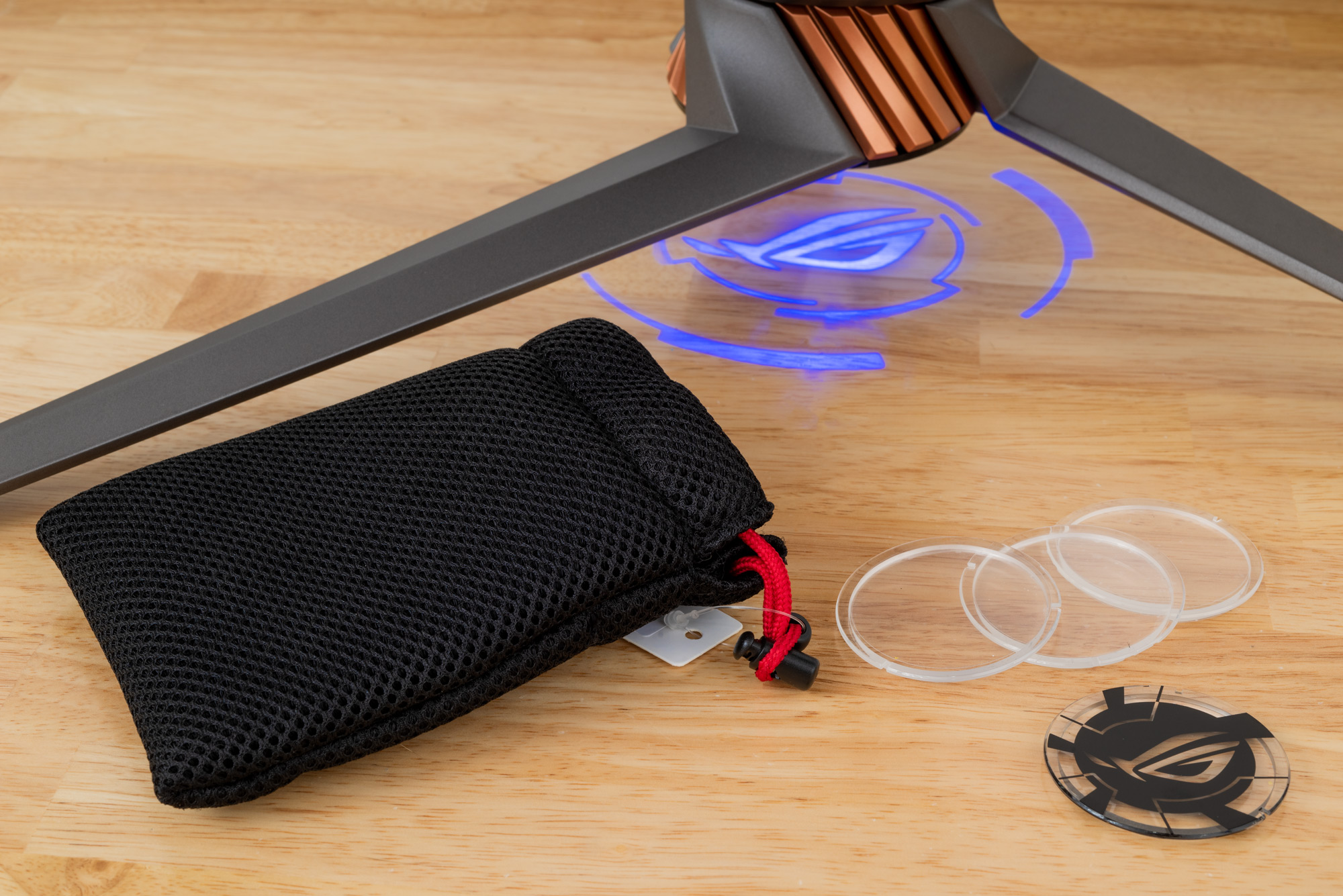
We include two snazzy ROG projector lenses with the PG35VQ so that you can show your allegiance with the surrounding pattern of your choice. If you'd like to make your own lens with a personal logo, we include three more blanks in the carry bag included with the monitor. We have more instructions on how to personalize your gear in a separate article.
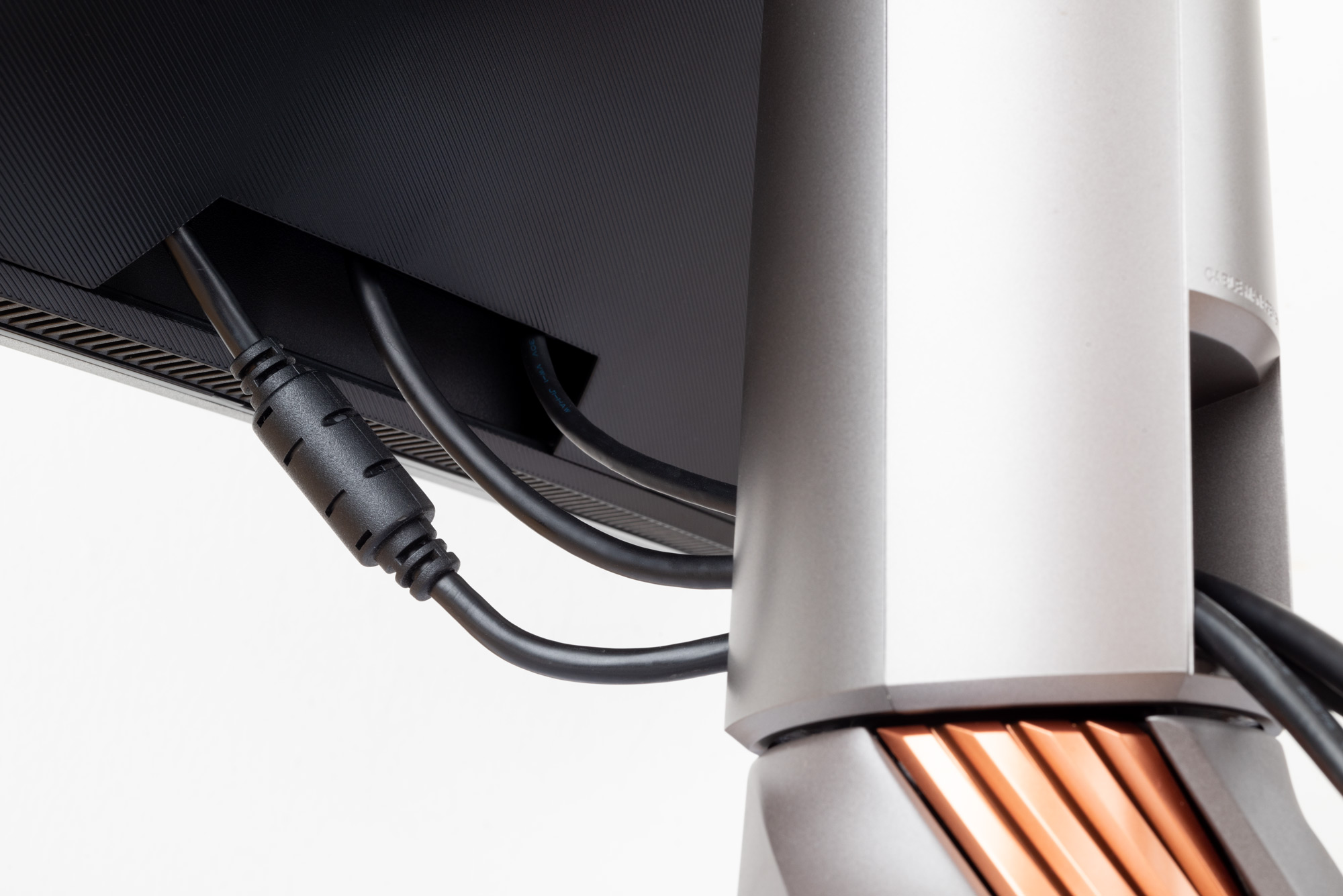
Nobody likes a tangled cable nest in their setup, so we include a snazzy rear shield to keep the PG35VQ looking clean from every angle. This shield pops off to make plugging in the included DisplayPort, HDMI, and USB 3.0 cables a snap, and its ridged texture makes it look like a built-in part of the monitor rather than an afterthought.
Our included stand is quite sturdy and solid in use, but if you'd rather put the PG35VQ on a display arm of its own, we get it. The PG35VQ's included VESA mounting kit has all you need to join the monitor to your mount of choice. We strongly recommend that you use the VESA mounting kit in the box if possible, as the length of its included standoffs have been carefully chosen to ensure that the display's active cooling system has plenty of room to breathe.
Getting in the HDR game
If you cringe or grimace at any mention of HDR, you've likely been conditioned to expect trippy, surreal-looking still images that are popular among a certain strain of photographer. The thing is, those images aren't actually expanding the dynamic range or color space possible from most display pipelines. Instead, they're the product of mapping the results of many differently exposed images into the same 8-bit sRGB color space and static brightness level that most viewers have been limited to until recently.
Forget whatever impressions you may have formed about HDR from those images, because they have absolutely nothing to do with what's possible from HDR video.
If anything, HDR video and games look more natural than SDR content. True HDR, by definition, allows creators to use a much wider range of dark to bright tones, as well as a much wider range of colors, to capture scenes and create the look of their movies and games. Since the product of that work can be closer to the full range of color and brightness the human eye can process, the best HDR video and games can be like looking at a window into another world.
To get a sense of how the PG35VQ’s impressive specifications translate into real-world gaming experiences, I fired up some of my favorite HDR games and adjusted their various parameters to fit this screen’s brightness range. We’ll talk more about how to get your own HDR display set up properly in a separate article that’s coming soon. With that work done, it was time to dive in and see what the PG35VQ could do.
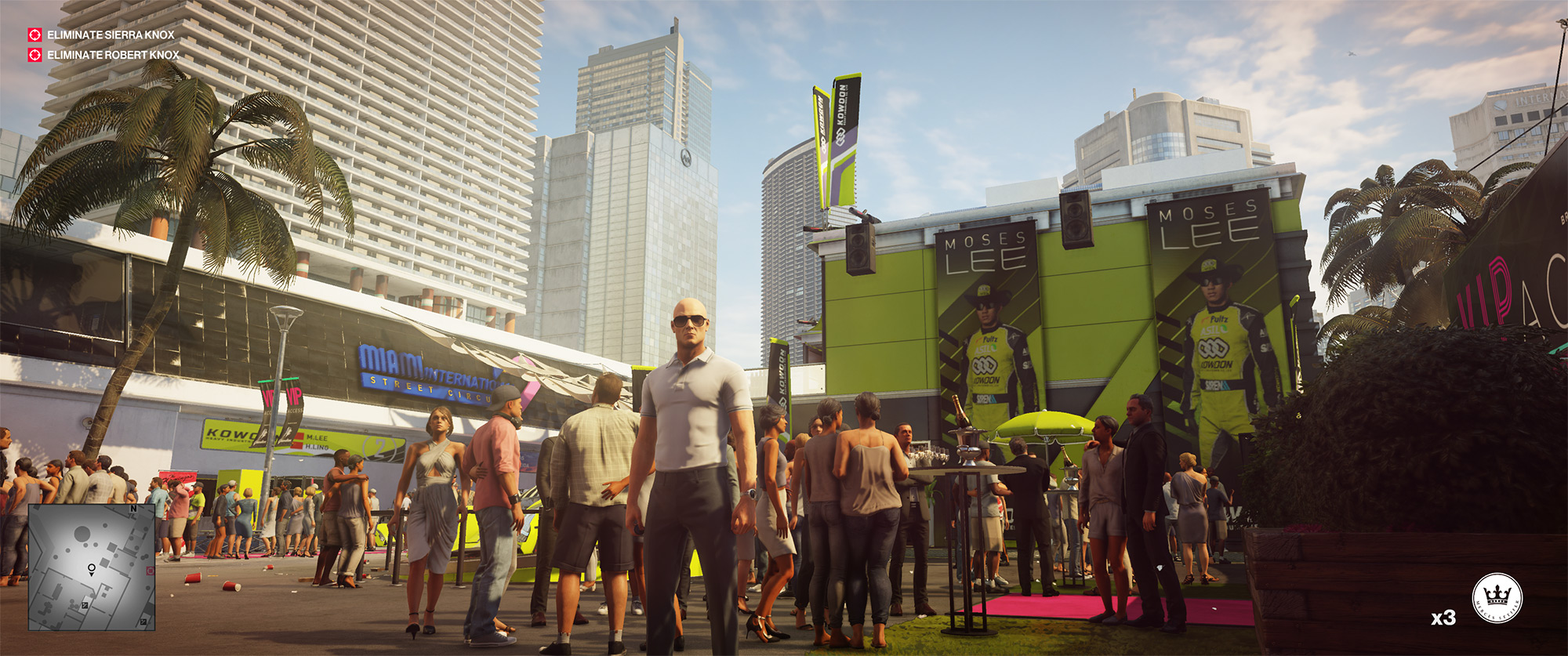
Hitman 2's Miami level is one of my favorites for showing off the power of HDR and wide color gamut content. This mission's endurance race setting offers plenty of vignettes full of vivid pinks, greens, cyans, oranges, and more. On the PG35VQ, these saturated colors practically exploded off the screen in HDR mode.
The PG35VQ’s backlight also did an excellent job of conveying the relentless Florida sun and its blinding interactions with glass, metal, cars, and more. It's an urban myth that you'll need to wear sunglasses to protect your eyes from the brightness of HDR displays, but the PG35VQ's rendering of sun and clouds in Hitman 2 gets bright enough to make you think about it just a little bit.

Assassin's Creed Odyssey also supports HDR, although its ancient Grecian color palette is more muted than Hitman 2's lurid modern setting. HDR's benefits in this title are more about subtlety and realism than they are about in-your-face punch and seared retinas. The PG35VQ excels at emphasizing the contrast between the bright white exteriors of period buildings and their darkened innards when you're outdoors.
Walk inside a house or temple, and the FALD backlight pumps up the brightness of point light sources that make their way in through windows, cracks, and doorways. Look out of a door or through windows while you’re inside, and you'll be greeted with a squint-inducing, washed-out rendering of the outdoors. That's an experience remarkably close to how we might see such extreme contrasts in real life, and it's a testament to how HDR can be used to heighten in-game realism.
Best of all, because the PG35VQ can sustain intense brightness levels even for wide areas of light colors, climbing limestone rock faces in direct sunlight in Assassin's Creed Odyssey feels incredibly realistic. Those types of scenes actually highlight one of the big differences between HDR LCDs and OLED panel technologies.
OLED TVs are often cited as the pinnacle of the HDR experience at the moment, and I know firsthand—I own one. While the true blacks of OLEDs are quite impressive, large swaths of light-toned areas (or pure white) expose an OLED Achiles’ heel. Large, light-toned areas might make an OLED TV dim thanks to the auto brightness limiter inherent to that screen technology, leading to a distracting dip in brightness just when you expect a scene to be really retina-searing.
The PG35VQ's active cooling, discrete backlight, and LCD tech allows it to remain incredibly bright across its entire area without issue, so it can reproduce large areas of light or white content without fail. When you're as close to a monitor as you will be with this display, that intense brightness really heightens the sense of reality and immersion possible from HDR content.
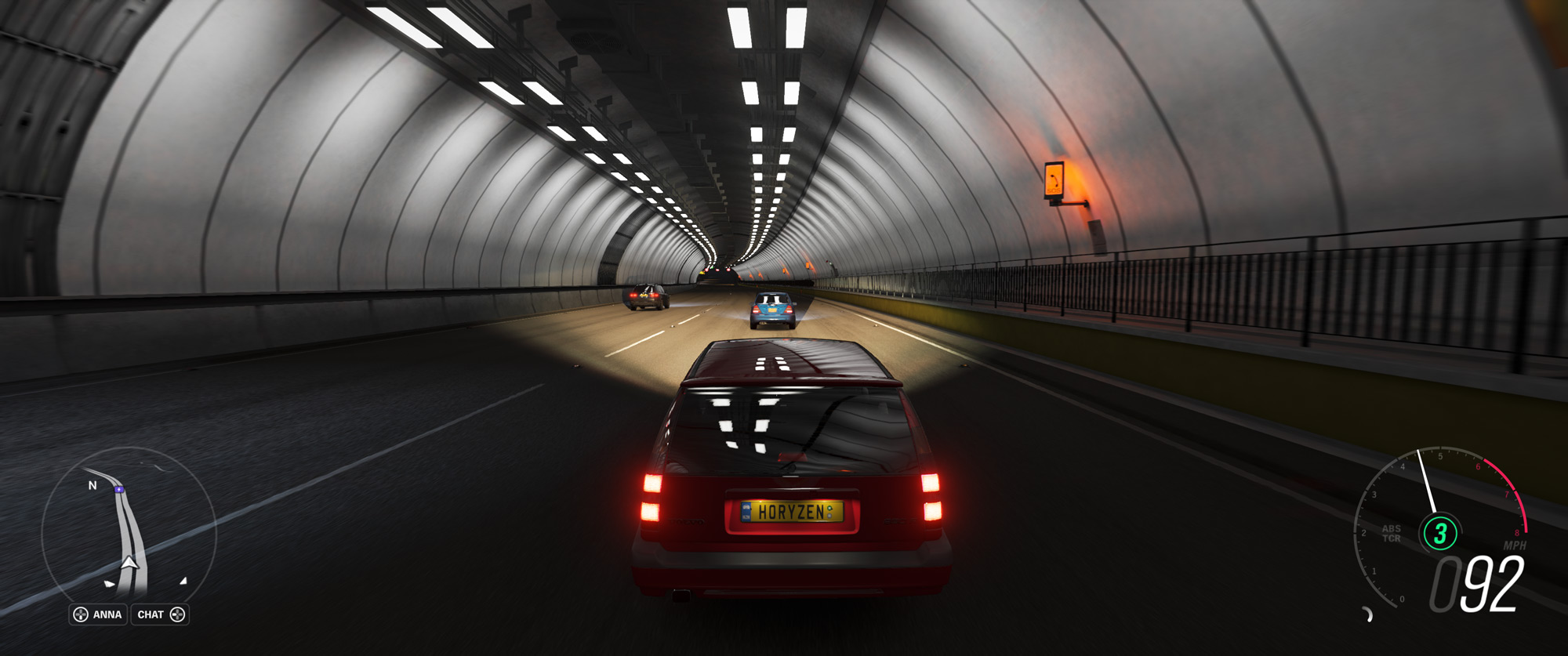
Forza Horizon 4's fanciful depiction of the English countryside doesn't have a lot of opportunity to show off gut-punching colors beyond the paint jobs of its four-wheeled inhabitants, so the game's creators seem to have used HDR more as a toolkit to play with light and shadow.
As I took my Ford Focus RS through a motorway tunnel, the lights overhead gleamed off the roof and windows in convincing fashion. And as I drove along a seaside road with the morning sun to my left, the combination of a bright sun behind clouds and the passenger side of my car in shadow made me do a double-take with its realism.
When I took a driver's-eye view in Forza Horizon 4, the glints of sun off interior chrome and the intensity of more diffuse patches of bright light on the dashboard heightened my suspension of disbelief. Combine all this with the sweeping view of the road that the PG35VQ's ultrawide vista offers, and this monitor almost makes you feel as though your hands are on the wheel.

Battlefield V also comes with HDR support baked in, and the northern African vistas in the “Under No Flag” single-player mission include plenty of opportunities to catch a glimpse of the sun beating down on you. It's a great way to see what's possible from HDR gaming.
In the first phase of this mission, HDR helps to emphasize the weak dawn light glinting off your weapons and the deep shadows of the early morning. In the second and third phases, the PG35VQ excels at reproducing the brightness of the daytime desert sun and the intense specular reflections of its beams on corrugated-metal aircraft hangars and bodies of water. Just like in Hitman 2, you don't need to wear sunglasses while playing HDR games on this display, but the FALD backlight can get bright enough to give your eyes that slightest tantalizing hint that you're really looking at the solar disc.
Teaching old games new tricks
While HDR gaming on the PG35VQ was plenty exciting, the vast majority of titles in gamers' Steam libraries or back catalogs don't include HDR support and likely never will. As I've noted, though, the unique features of this display are hardly wasted on older titles. Full-array local dimming and wide color can still enhance the appearance of SDR content in surprising and satisfying ways.
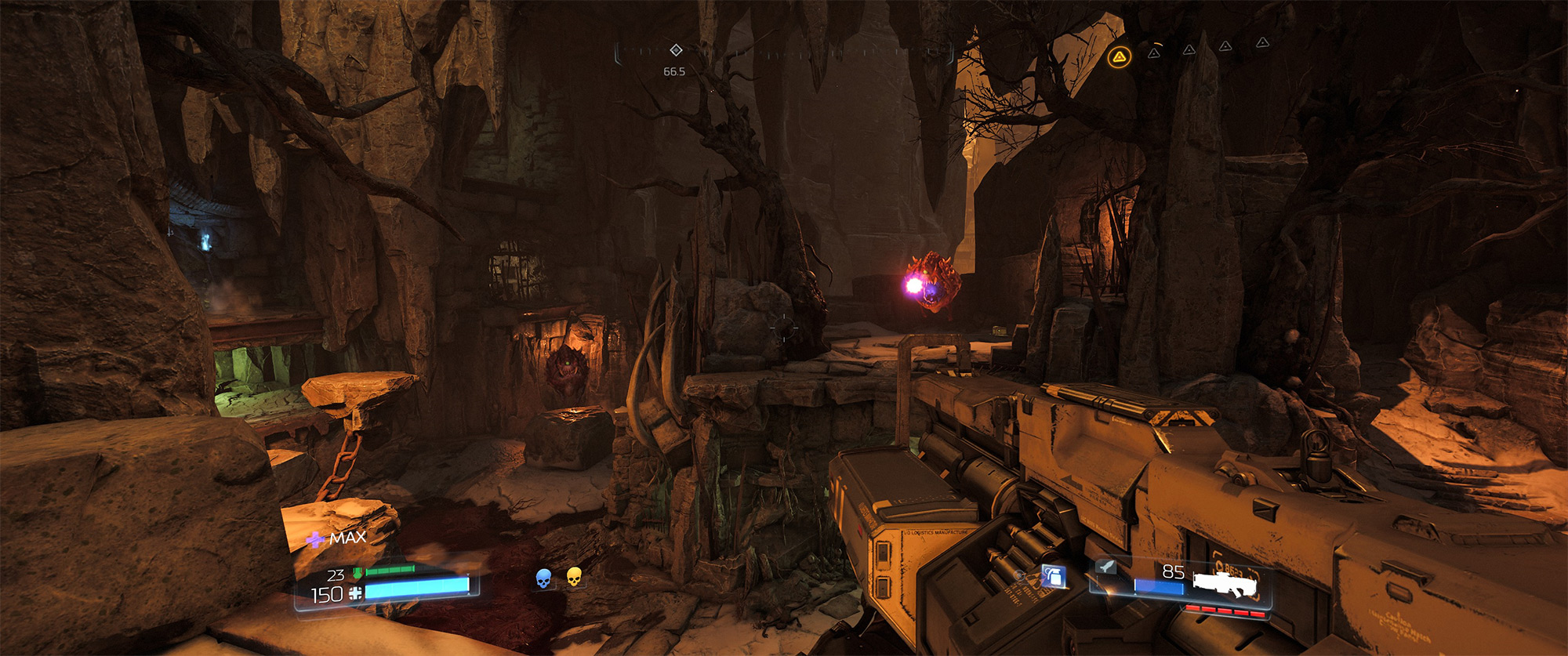
The 2016 reboot of Doom doesn't support HDR output, but the PG35VQ can still work its magic on this game. My GeForce RTX 2080 Ti has little trouble keeping Doom pegged at its 200 FPS cap at 3440x1440, so it was a great opportunity to overclock the PG35VQ to 200Hz. That dizzying refresh rate makes for incredibly smooth motion in this fast-paced title, and G-SYNC helped keep the action smooth on the rare occasions where my graphics card couldn't keep up.
Leaving the FALD backlight enabled in Doom sweetens gameplay in two ways. For one, in the most shadowy corners of the UAC Mars facility and in Hell, the low black levels from corresponding backlight zones make for a punchier, more pleasant image. For two, the extreme brightness possible from FALD highlights comes through in Doom in surprising ways. The backlight really brings out the muzzle flash from the game's assault rifle, the orange overlay on enemies susceptible to glory kills, and the sparkle of the numerous small warning lights scattered throughout the UAC facility.
Enabling wide color gamut support for SDR content turned the game's liberal use of pure red palettes into electrifying, hair-raising washes of crimson that are unlike anything you'd see on an sRGB display. Doom is one of my favorite games in recent memory, and the PG35VQ made my latest replay of it better than ever.
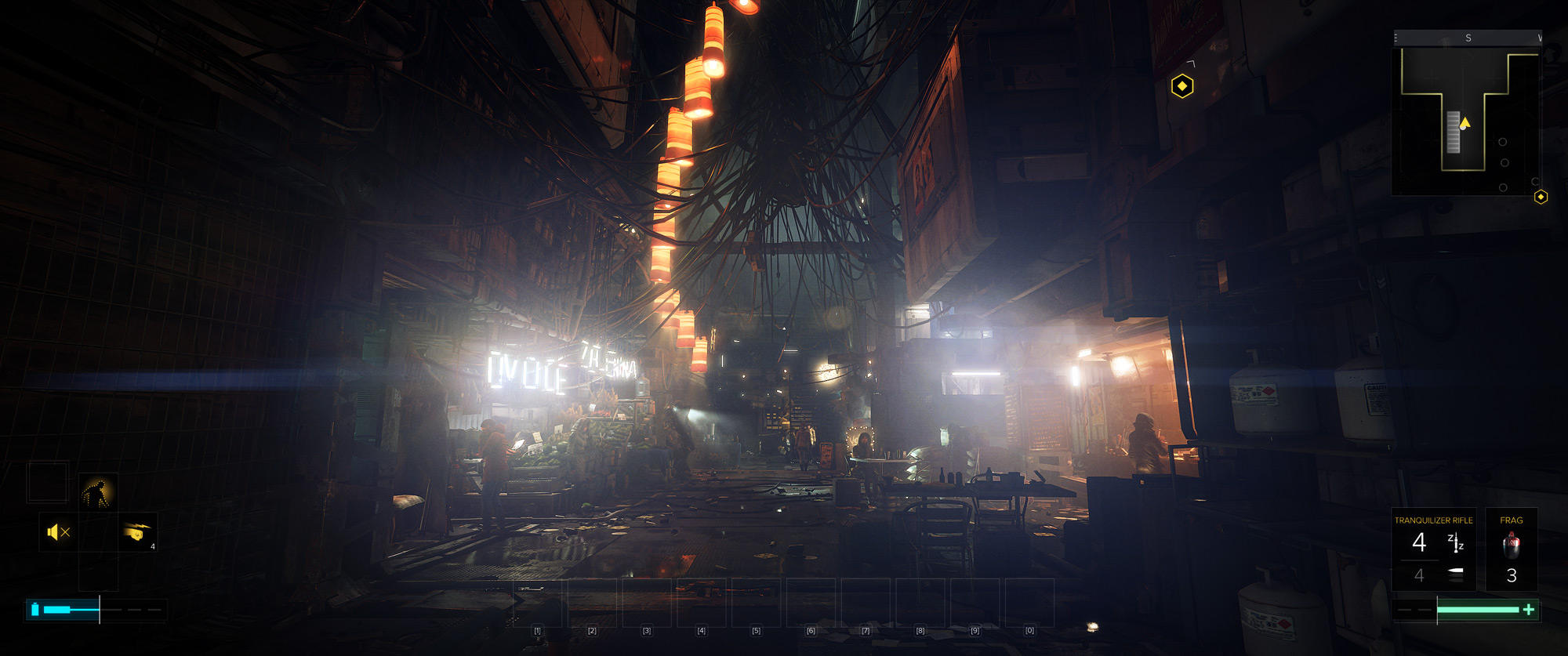
Deus Ex: Mankind Divided's Golem City level is full of simulated bare bulbs, fluorescent tubes, and other point light sources. Like Doom, this game came out before HDR support was widespread, but the PG35VQ's full-array local dimming backlight helps heighten the sense that you're staring into harsh, unwelcoming light sources improvised from whatever was lying around. Deus Ex isn't full of saturated primary colors, but the FALD backlight alone is enough to make this game's environments feel more immersive—and more oppressive, as its story intends—than an SDR monitor can ever hope to.
The best around
The ROG Swift PG35VQ outfits gamers with a veritable arsenal of ways to play how they want. After using it for a couple weeks, my favorite feature of this display is its 512-zone full-array local dimming backlight. This technology doesn't just create squint-inducing highlights and inky-black shadows in HDR content. It can stay active in every SDR title for better contrast. The PG35VQ’s wide color gamut mode makes for more eye-popping colors than you've likely ever seen, and it can be enabled outside of HDR mode for vivid colors in older content, too.
The PG35VQ's virtues don't stop at wide color and extreme dynamic range. Refresh rates ranging all the way up to 200Hz let competitive gamers see more frames per second to stay on top of the action. NVIDIA G-SYNC variable-refresh-rate technology ensures that every frame appears in perfect, tear-free glory when frame rates drop below the display's maximum refresh rate. Finally, the ultrawide aspect ratio lets gamers see more of the battlefield than they ever could on typical 16:9 displays. Going back to my 16:9 display felt limiting after I spent dozens of hours playing on this ultrawide display.
No matter what games you play or how you like to enjoy them, the ROG Swift PG35VQ will make them look better than they ever have. And if you keep this display through two or three system builds to come, as I have with high-end monitors in the past, it'll offer a consistently enjoyable experience that will only get better as future hardware catches up with its prodigious refresh rate and high dynamic range. Aura lighting and an audiophile-quality ESS DAC serve as cherries on top of this tantalizing display sundae. If you want one of the best and most versatile gaming monitors around, the PG35VQ should be at the top of your list.
|
|
|
| Availability (Canada) | Canada Computers |
Forfatter
Popular Post

Introducing the ROG Astral GeForce RTX 5090 and 5080: a new frontier of gaming graphics

How to configure your PC's RGB lighting with Aura Sync

How to replace the switches in your ROG Gladius III gaming mouse

All the new gaming gear revealed from the ROG Lab at CES 2025
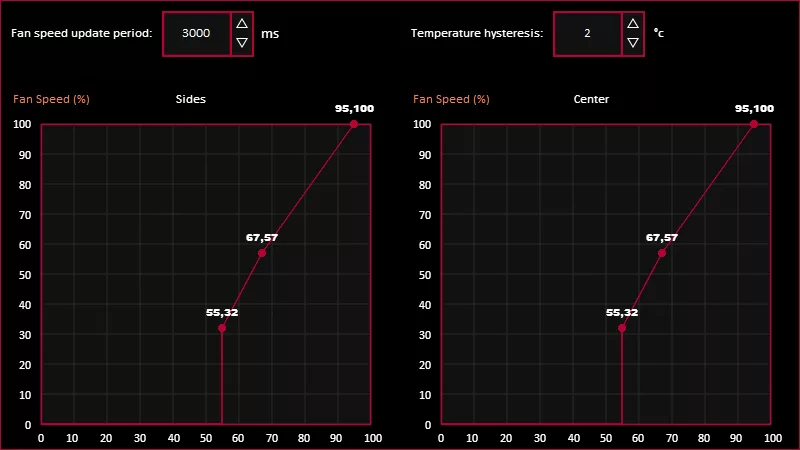
How to Adjust Your Graphics Card’s Fan Speed in GPU Tweak III
Seneste Artikler
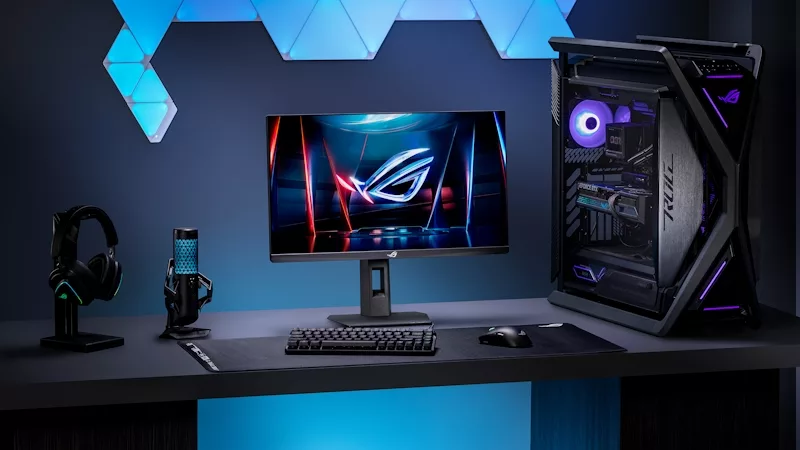
The ROG Strix Ace XG248QSG gaming monitor puts the pedal to the metal with a 610Hz refresh rate
Generations of ROG displays have fueled esports gamers’ need for speed. Meet our latest tournament-grade monitor.
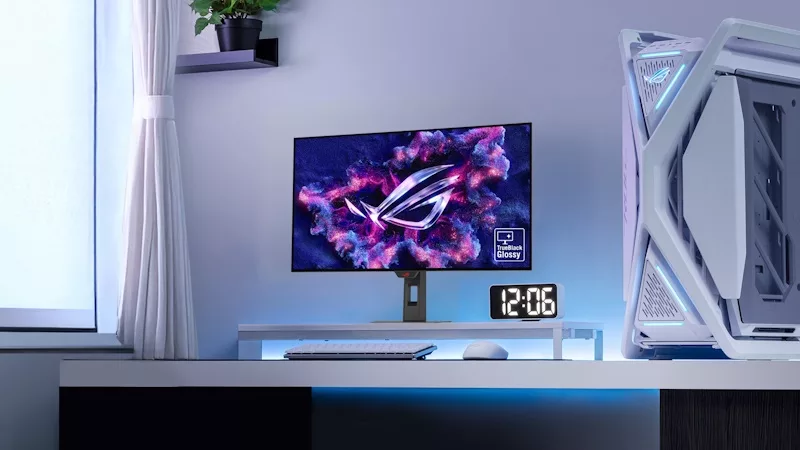
32-inch glossy WOLED panels debut in the ROG Strix OLED XG32UCWMG and XG32UCWG gaming monitors
Get inky blacks in any environment, deft reflection handling, vibrant OLED colors, and great gaming specs in a 32-inch monitor.

How the Neo Proximity Sensor on the latest ROG OLED monitors improves on its predecessors
The latest ROG OLED monitors feature a new upgrade: the Neo Proximity Sensor. Here's what it offers over previous models.
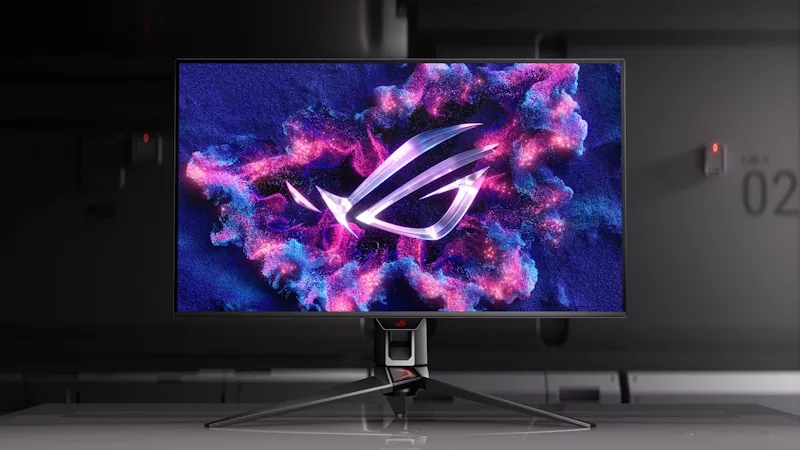
Get an optimal display experience in any game with ROG dual-mode monitors
A dual-mode monitor lets you dial in the right settings for your game, whether it's a high resolution or an ultra-fast refresh rate.
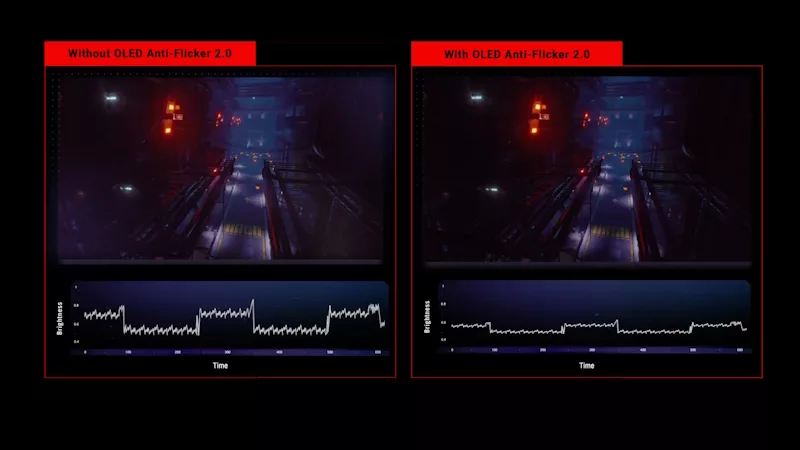
OLED flicker: What it is, what you can do about it, and how ROG leads the fight against it
Here's how the latest ROG OLED gaming monitors minimize distracting OLED flicker.

The ROG Strix OLED XG27AQDPG kicks the refresh rate up to 500Hz
500Hz and a 4th Gen QD-OLED panel makes this a dream monitor for competitive gaming.